How UPA Injected Horror into Cartoons
Plus: the week's top stories and UPA's little-seen 'More Than Meets the Eye'
Welcome to another edition of the Animation Obsessive newsletter! We’re happy to have you.
This week, we’re throwing it back to the 1950s. First, we dive into UPA’s surreal and artful Tell-Tale Heart — a dramatic cartoon from a time when comedy dominated. After a detour into the week’s top animation news, we return to the ‘50s for a quick look at More Than Meets the Eye, one of the most adventurous mid-century cartoons ever made.
If you’re new here, it only takes a second to subscribe for free. You can keep up with the Animation Obsessive newsletter every Sunday, right from your inbox:
That’s the intro. Now, let’s go!
The Tell-Tale Heart, UPA's Darkest Vision
It’s sometimes said that UPA lost its way in 1952. John Hubley, who’d helped define the studio with films like The Ragtime Bear and Rooty Toot Toot, lost his job that May thanks to the Hollywood blacklist. How could UPA’s creative spirit survive?
This is more of a tired narrative than a fair assessment, though. Some of UPA’s most unique, vital and influential cartoons date from the post-Hubley period. One of those films is the Oscar-nominated Tell-Tale Heart, released in December 1953.
Animation focused on drama and horror is commonplace today. Browse Netflix and you’ll find reams of it, from Demon Slayer to Blood of Zeus. This future was far from obvious in the America of the early ‘50s — a time when cartoons were expected to be funny at least part of the time. UPA rejected that pigeonhole by animating one of Edgar Allan Poe’s most disturbing stories, the tale of a madman turned murderer.
Even now, The Tell-Tale Heart is harrowing. This is UPA’s darkest film. All of the studio’s work takes from modernist art and design trends, but none delves this fully into surrealism and German expressionism. The film mostly denies you the comfort of character animation, favoring cross-dissolves and creative camerawork from director Ted Parmelee. And James Mason, as the mad narrator, is still chilling today.
Studio head Stephen Bosustow came up with the idea to adapt Poe. As Adam Abraham recounts in When Magoo Flew: The Rise and Fall of Animation Studio UPA, Bosustow originally wanted to do “The Raven.” Parmelee and Paul Julian fought for “The Tell-Tale Heart” instead.
Julian was only an artist on the film, but he became its driving force. Dark, strange paintings make up the majority of what happens on screen — and Julian handled them himself. The result is a culmination of the ideas he’d explored in The Four Poster (we covered that back in March). Here’s Abraham:
… as Steve Bosustow noted, “Paul Julian was really the heavy” on The Tell-Tale Heart. Julian created around 75 percent of the layout drawings and painted every background. Bosustow declared the film to be “Paul Julian’s masterpiece.”
The images below offer a small sample of the surviving Tell-Tale Heart artwork. Many of Julian’s other pieces are preserved today in the personal collection of director Guillermo del Toro. (Be sure to click to enlarge.)
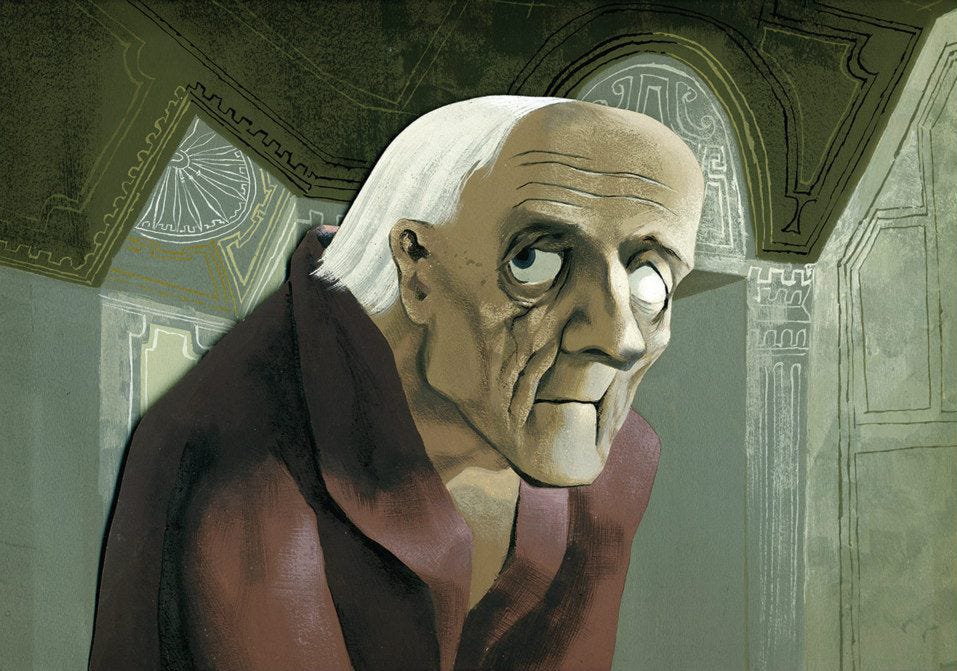
Bosustow had a point to prove with The Tell-Tale Heart. “The animated film can be used for drama and melodrama as well as for humor, childish romance, pratfalls and ‘hurt’ gags,” he told Time. Most UPA cartoons aren’t gag-a-minute affairs as it is. Abraham once aptly called the studio’s output “droll and modernist cinematic experiments.” This film just takes the next step — abolishing jokes altogether.
But Bosustow at first proved his point a bit too effectively. The Tell-Tale Heart was supposed to be a 3D picture, UPA’s contribution to the craze that had picked up around 1952. If today’s version is harrowing, the 3D edition, which Columbia Pictures forced Bosustow to scrap, sounds like a nightmare. Abraham again:
The effect was thrilling. One woman fainted, and some of the artists’ children, terrified, ran out of the theatre. Those who remained saw a white moth flutter over their heads; garish lanterns tilted ominously; and the old man’s beating heart thrust forward in three dimensions. In another preview screening, Herb Klynn recalled, an audience member suffered a seizure.
Even in 2D, The Tell-Tale Heart stands alone in UPA’s oeuvre. Paul Julian only built on it later, with The Hangman, after he left the company. Its echoes haunted Eastern Europe as well, through projects like Tifusari and The Masque of the Red Death from the Zagreb School of Animation. But the original is hard to top. You still, after all these years, can’t quite pull your eyes away from what UPA made here.
Headlines of the week
Cartoon Saloon luminaries join The Inventor
Following its Kickstarter success last year, The Inventor has another win to its name. On Friday, Deadline reported that Cartoon Saloon’s Tomm Moore and Fabian Erlinghäuser will handle 2D animated sequences for the film. The directing duo recently won an Annie for There’s a Monster in My Kitchen.
Tomm Moore is fast becoming an in-demand collaborator. Earlier this month, Japan’s Mamoru Hosoda announced that Moore and his Wolfwalkers directing partner Ross Stewart would join Belle, set for release this year. That’s one to anticipate, if the Moore/Stewart segment from The Prophet is any indication.
For those just hearing about The Inventor, it’s an ambitious stop-motion feature about Leonardo da Vinci. A member of the Ratatouille story team, Jim Capobianco, directs. The film raised over $100,000 on Kickstarter — its budget is now at $10 million.
Soyuzmultfilm pushes development
In Moscow, Soyuzmultfilm revealed an intriguing new move on Wednesday. The studio has signed a memorandum with the governor of Khabarovsk Krai, a territory in the Russian Far East, to create an “animation cluster” in the region. This type of development is most famous in the tech world — Silicon Valley being the prime example.
The initiative will bolster cartoon production in Khabarovsk, create new local training programs and, later this year, stage a film festival. Animation is new to the Russian Far East. Its first studio, Mechtalёt, is just under three years old. That company is set to work with Soyuzmultfilm on the animation cluster. One incentive for the plan is Khabarovsk’s proximity to Asia, according to Soyuzmultfilm.
This move is part of Soyuzmultfilm’s wider strategy in the remote regions of Russia. In January, the studio announced a similar animation cluster for Novosibirsk, a section of Siberia.
Hornet snaps up more talent
The wool animator Andrea Love has built up a sizable following on Instagram. Her stop-motion project Tulip, a Thumbelina film co-directed by Phoebe Wahl, made waves at festivals last year. And now she’s the latest pickup by Hornet.
Based in New York, Hornet is a production firm with quite a roster of experimental animators. It’s even home to Julia Pott, the creator of Cartoon Network’s Summer Camp Island. Hornet works mainly in ads — at this year’s Annie Awards, two of its spots were nominated in the category that There’s a Monster in My Kitchen won.
From the vault — More Than Meets the Eye
The Tell-Tale Heart might seem to imply otherwise, but America’s classic cartoon era wasn’t a time of pure artistry. Business always mattered — even UPA made a lot of its money through industrial films and TV ads. That didn’t equate to bland work, though. You’ll find plenty of boundary-pushing animation hidden away in sponsored, message-driven projects.
That’s the case with More Than Meets the Eye. It’s a 14-minute piece directed by Bill Hurtz for CBS Radio, meant to sell advertisers on the power of radio amid the rise of television. John Hubley designed it. From a graphic standpoint, the result might be his most forward-thinking work at UPA, and the most forward-thinking cartoon of the 1950s.
The film’s core idea is sound visualization, but the design goes way beyond that basic outline. It’s impossible to list every invention at play here. Many moments, like the sequence where a floating suitcase goes into an office building, are like modernist paintings in motion. A story from the late Gene Deitch offers a glimpse into Hubley’s thinking at the time:
“Think of our camera,” he said, “as a specialized sort of camera that visualizes sounds — not just wiggly lines, but actual images of objects and backgrounds that would only appear on the screen for the actual duration of the sound it makes, even micro-seconds!” Hub was describing what could now be described as a kind of sonar, or the modern medical device that can show you the image of a baby inside a pregnant mother.
In 1953, the design magazine Graphis named More Than Meets the Eye “one of the most courageous and interesting experiments” from UPA. For the writer, its visuals offered a “noteworthy proof of the eternal validity of the language used by contemporary art.”
This is the same article that reached Yugoslavia to shape the Zagreb School of Animation. (You can read the whole thing here.) Somehow, it adds up that Hubley’s wildest project at UPA was in some sense behind those films.
More Than Meets the Eye remains one of UPA’s most obscure major works. It spent decades out of reach to the general public. Thanks to the National Film Preservation Foundation, though, you can watch it in restored quality right now. This is essential viewing for anyone with an interest in UPA, Hubley or mid-century modern design as a whole.
Last word
Thanks for reading! We hope you’ve enjoyed. Catch us next Sunday for another batch of animation highlights from around the world.
In the meantime, feel free to browse our archives if you’ve missed any of our recent updates. Last week, we interviewed Sandra Andersen of the Wolfwalkers team about her character design, posing and model sheet work on that project. Her answers offer a fascinating peek into the creative process at Cartoon Saloon.
Until next week!



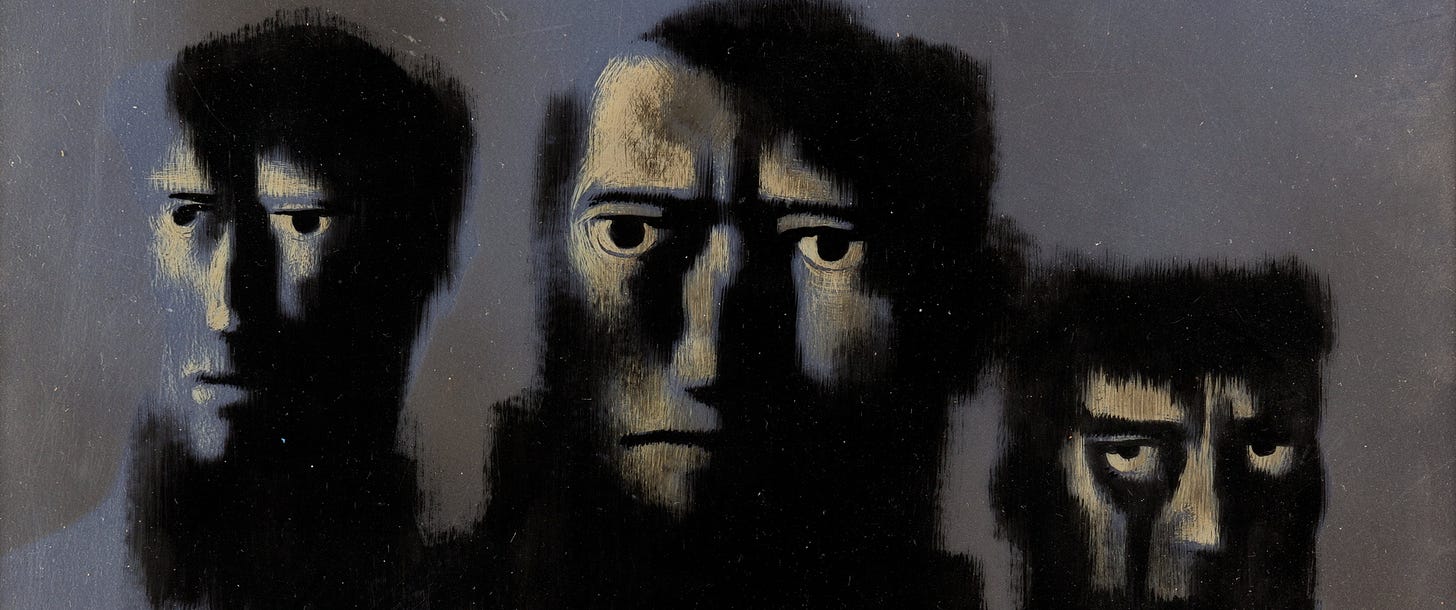
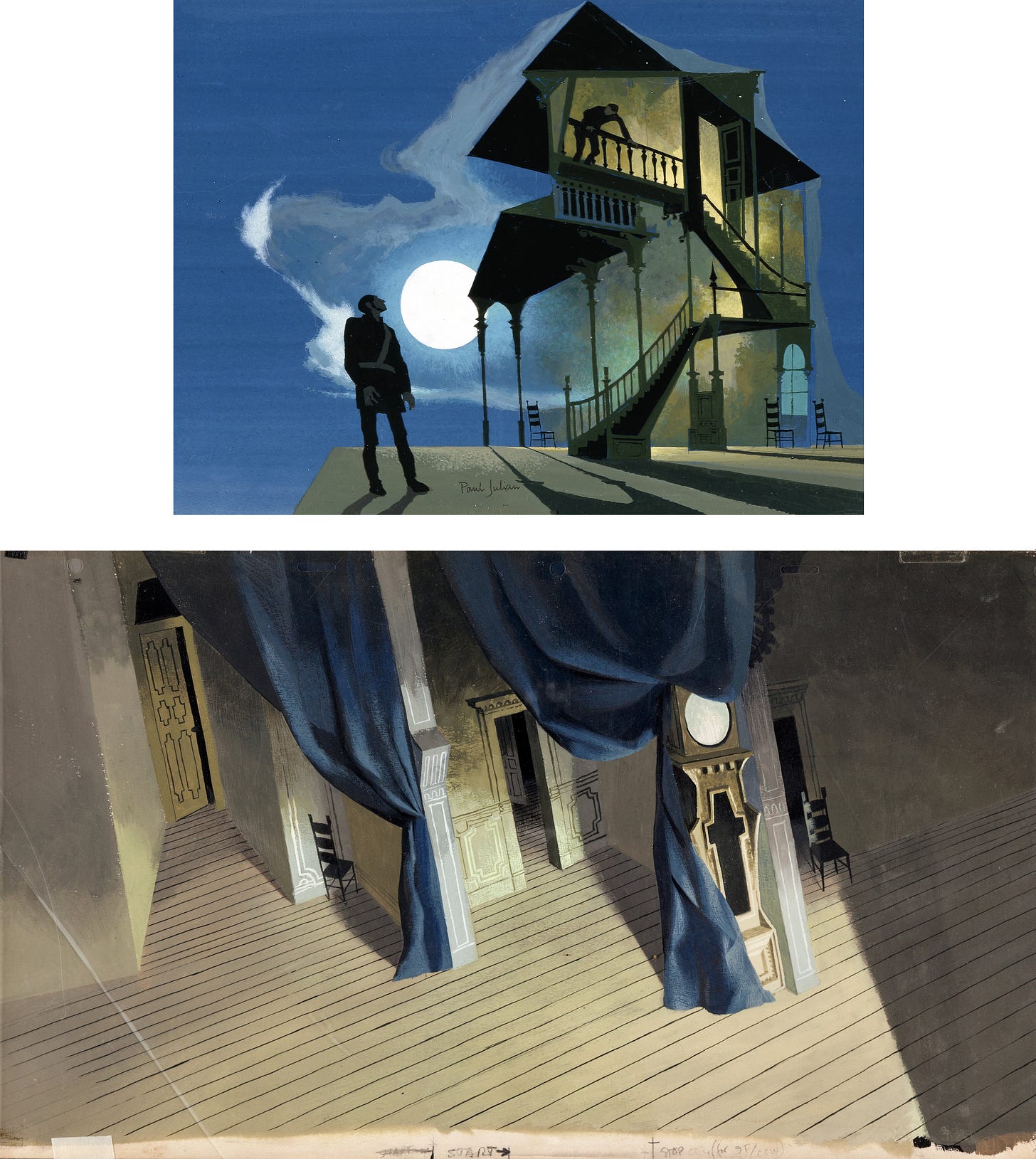
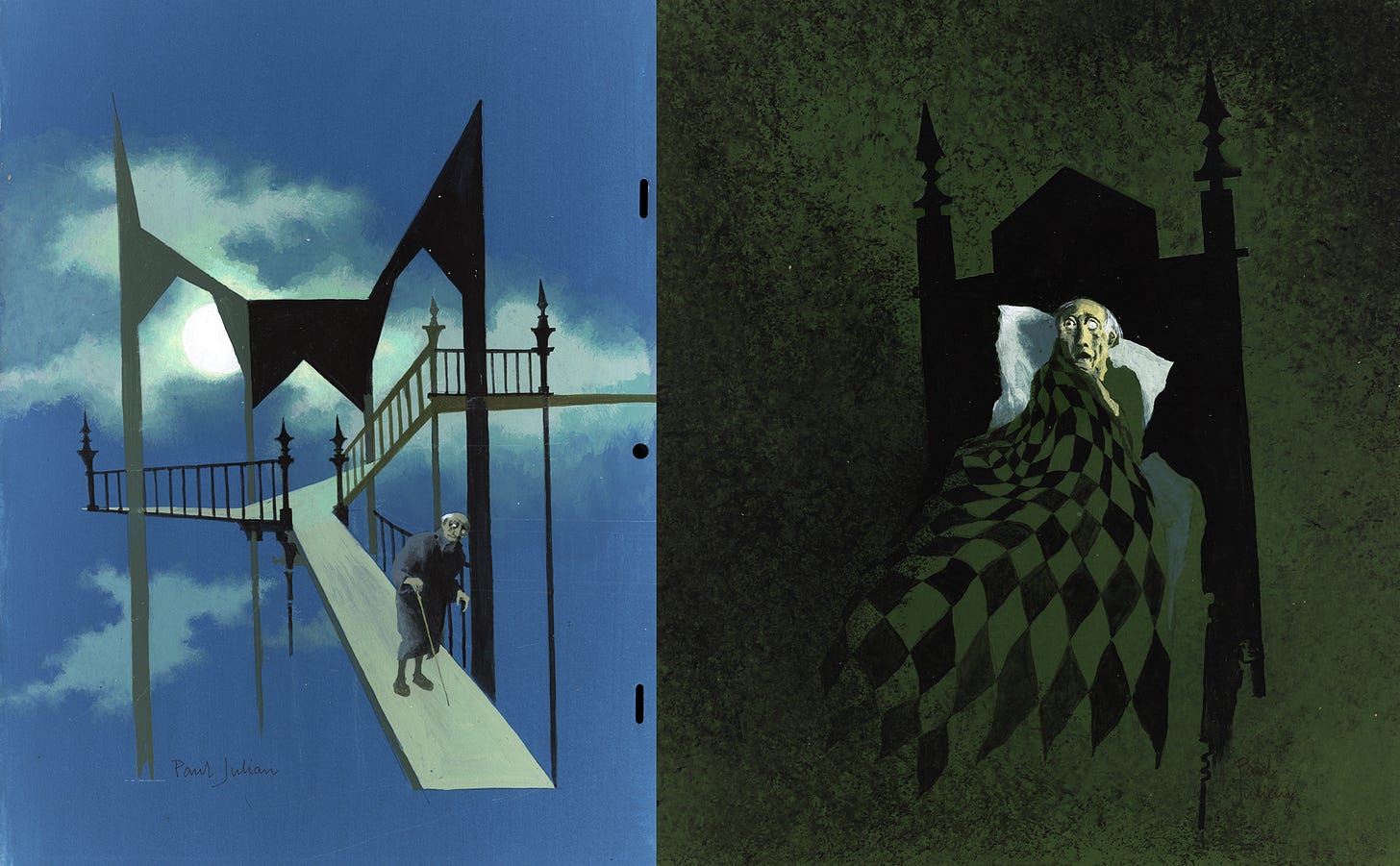
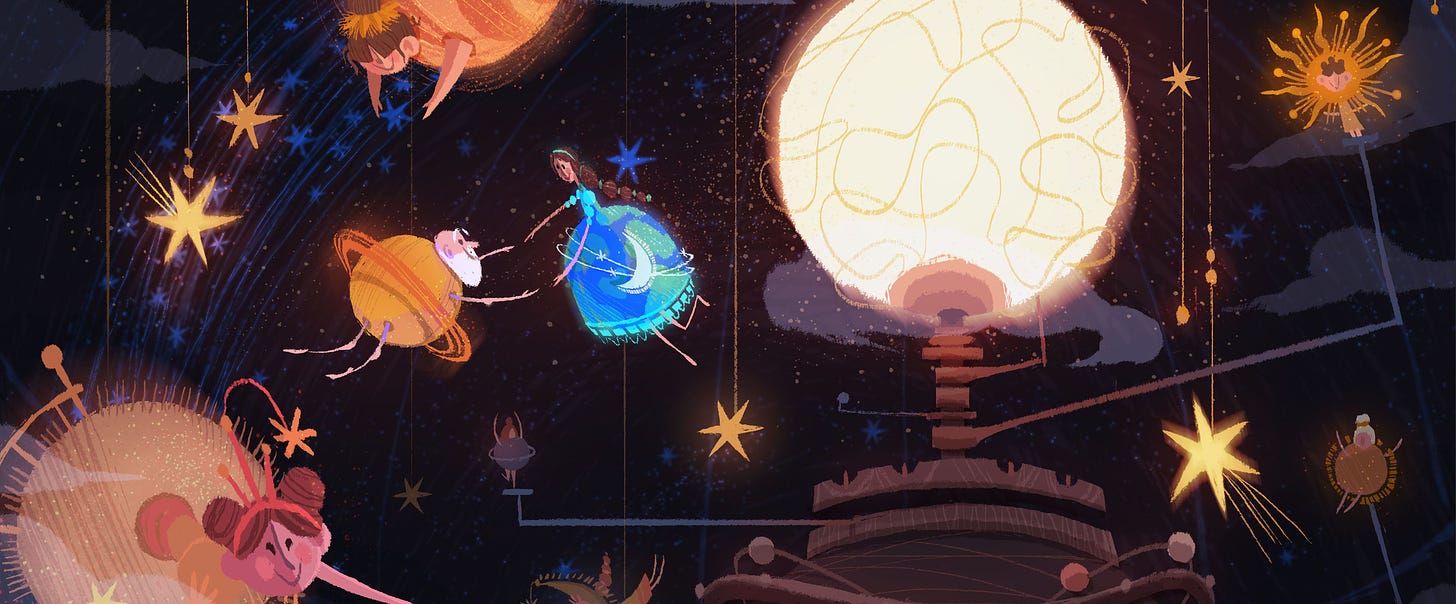

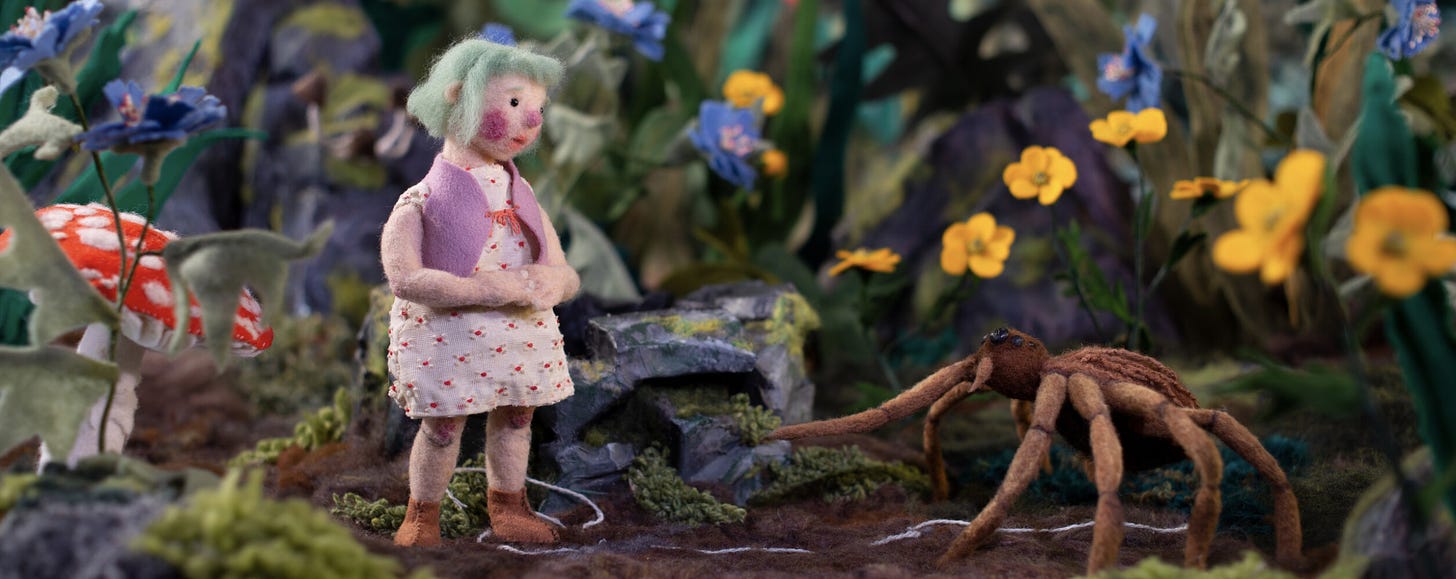
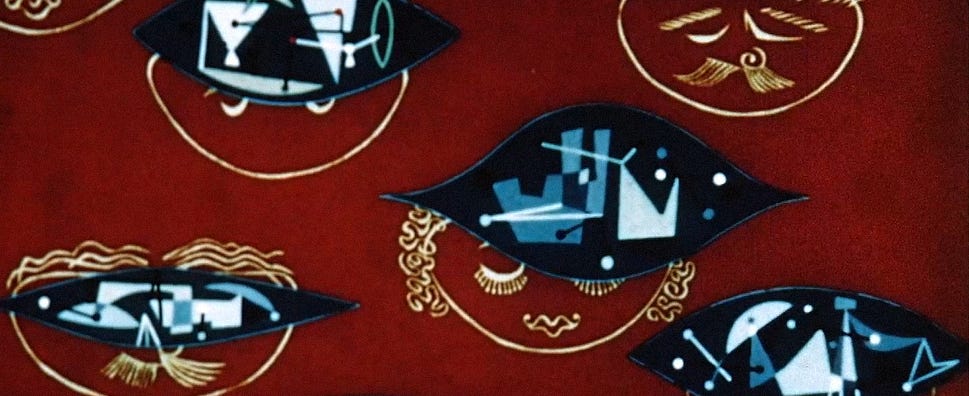
Only just reading this on the same day you also published the interview on Sept 11th 2023. Interesting to see the DaVinci film mentioned at both ends.